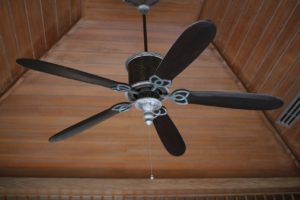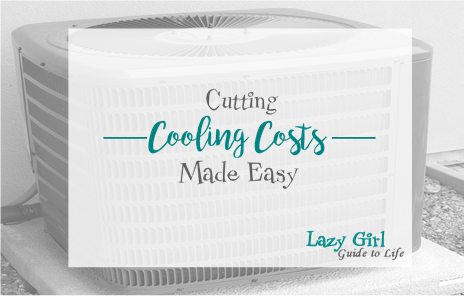When the days get longer and warmer, the temperatures in the house begin to climb, you’ll soon be turning on the air conditioner. According to the US Department of Energy, 45% of your monthly utility bill is for heating and cooling. But while you are cooling off your home, are you letting your money go out the window? Here are a few things you can do to cut your cooling costs, be cool, and keep your money in your pocket.
Before Turning on the AC
Just as you “winterize” your home during the winter, you need to “summerize” you home for the summer. Do you have screens on your windows? Solar screens or mesh-like screens intercept up to 70% of the solar energy that enters through windows. According to the US Department of Energy, screens on windows facing east or west are particularly effective. Screens make it possible to open the window at night if it is cool. In addition to screens, you may want to put window film on the windows.The film reflects the heat so that it cannot be transmitted through the glass into the home.
Sealing Air Leaks
Another way to save money on your cooling cost is by sealing air leaks around your windows. This can prevent warm air from entering your home and by keeping the cool air in. In addition to sealing the leaks, close the blinds or curtains. This can reduce heat gain in the summer by up to 45%.
Cooling with Fans
Use ceiling and box fans. Circulating the air is important when trying to cool your home. An air conditioner can use anywhere from 2,000 to 5,000 watts while a ceiling fan uses only 10 to 100 watts resulting in a reduced utility bill. Choosing a ceiling fan with 5 blades will provide better stability (less wobble and noise) than a fan with fewer blades, as well as provide more air circulation. Ceiling fans come in a variety of styles and colors, including with or without lights.
Did you know that the direction the fan blades rotate is important? During the summer, the fan should be turning counterclockwise or Consequently, in the winter, the fan blades rotate clockwise or “reverse” direction. Look for the switch on the ceiling fan to start using this feature.

Alternative Cooking Methods and Meals
Summer is a great time to eat cool meals such as salads and it’s also a great time to grill. Did you know that your stove top and oven, while in use, generate heat that escapes and heats your home? If you must cook indoors, cook in the evening or use your microwave. You can cook meals in advance so that you don’t need to cook every night which has the added benefit of giving you more free time.
Other alternatives to the grill include: the microwave oven, slow cooker, electric skillet, multipurpose rice cooker, and pressure cooker. During and after cooking, make sure to turn on the kitchen exhaust to help remove heat and moisture.
Turning on the AC
According to the Department of Energy, you can save 5 to 15 percent on your cooling bill simply by keeping the thermostat set at 78 degrees Fahrenheit while you are home and raising it to a higher temperature at night or when you leave your home. If you are able, install a programmable thermostat. Once set, the needed temperature settings become automatic.
Additionally, it is critical that you routinely check the air filter. Two percent of your air conditioner’s efficiency is reduced by a dirty filter. A clean filter will allow for good air movement. Next, is your air conditioning unit level? If the unit is not level, the condensation cannot drain properly. How old is the unit? Replacing an older, less energy-efficient unit may save you money in the long run by cutting your energy costs in half. When looking for a new unit, look for a high-energy-efficiency ratio (or EER) or an Energy Star qualified unit.
Don’t let the summer heat make you throw money out the window! For more tips on maintaining your air conditioner, just click here:



